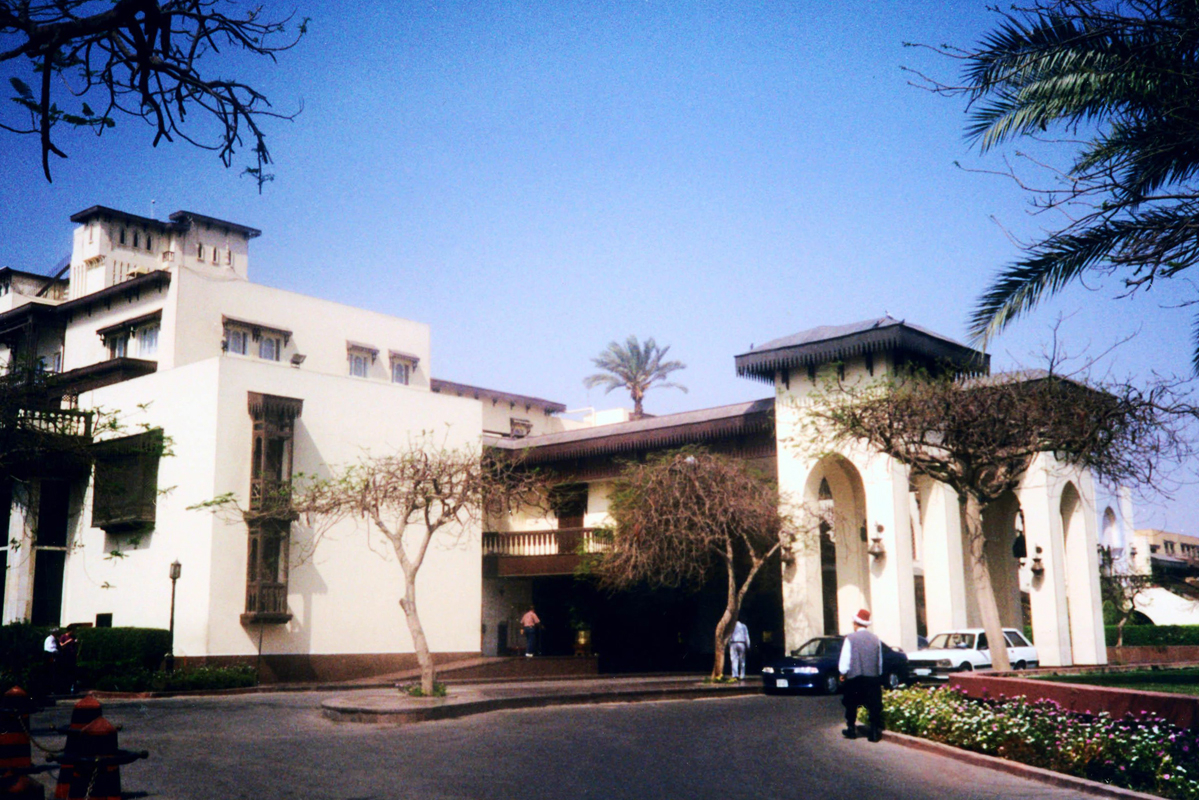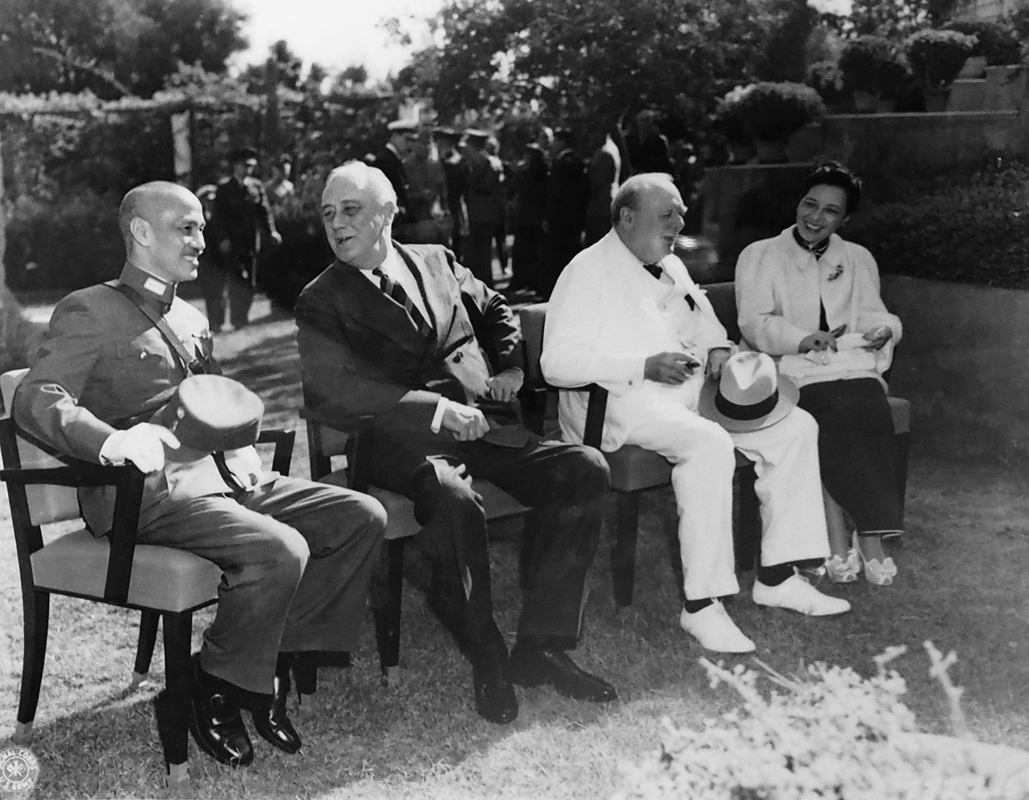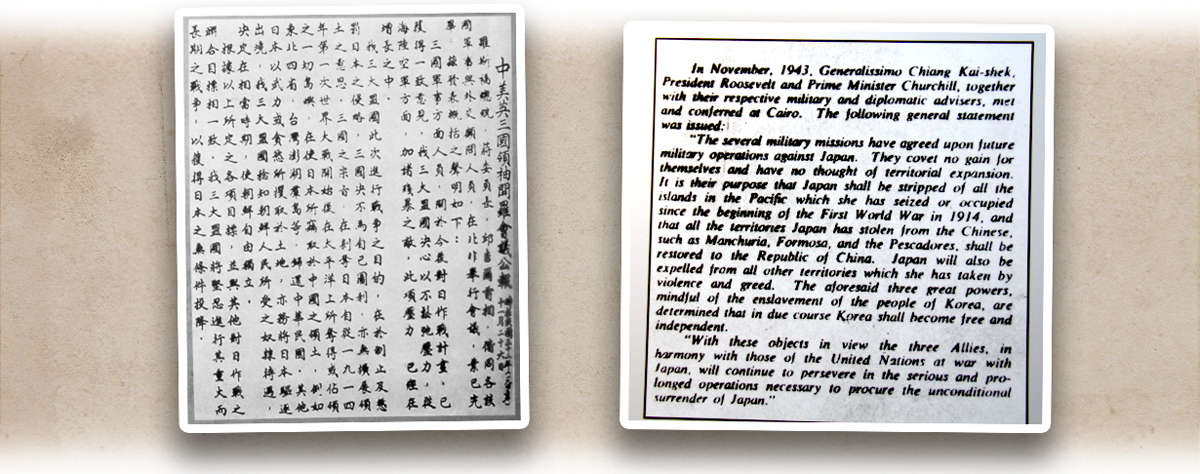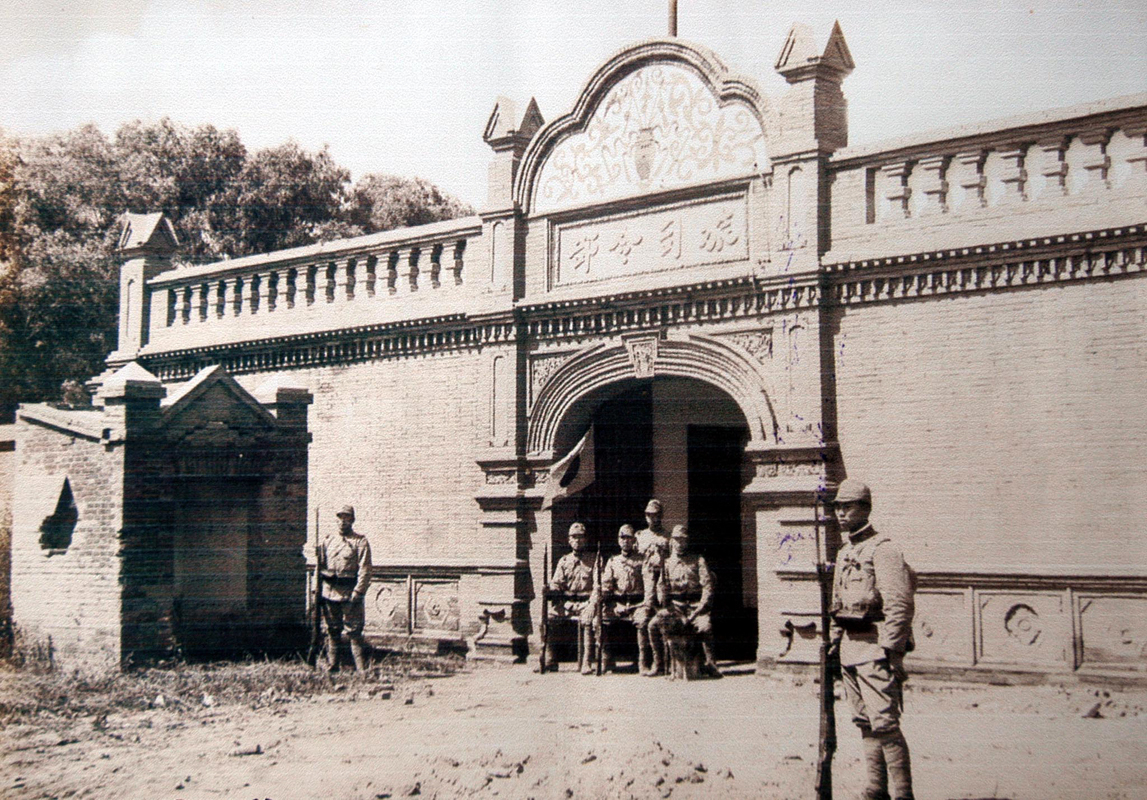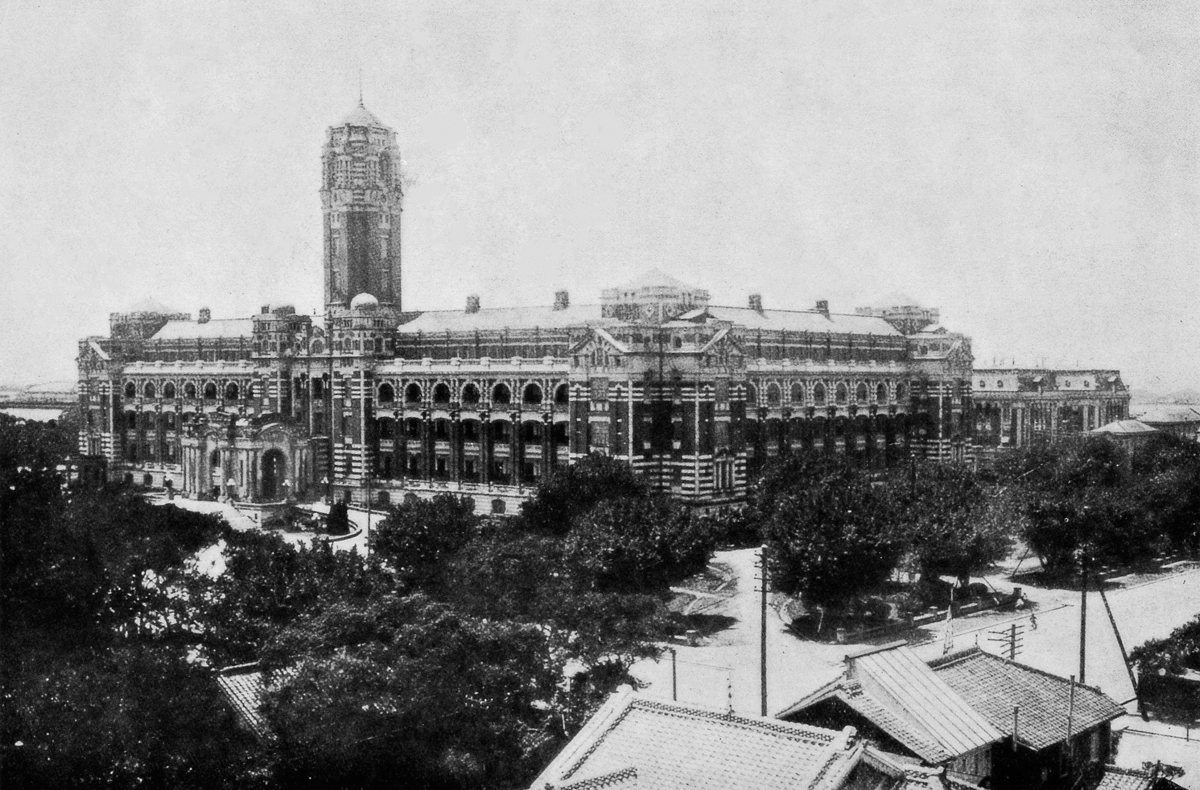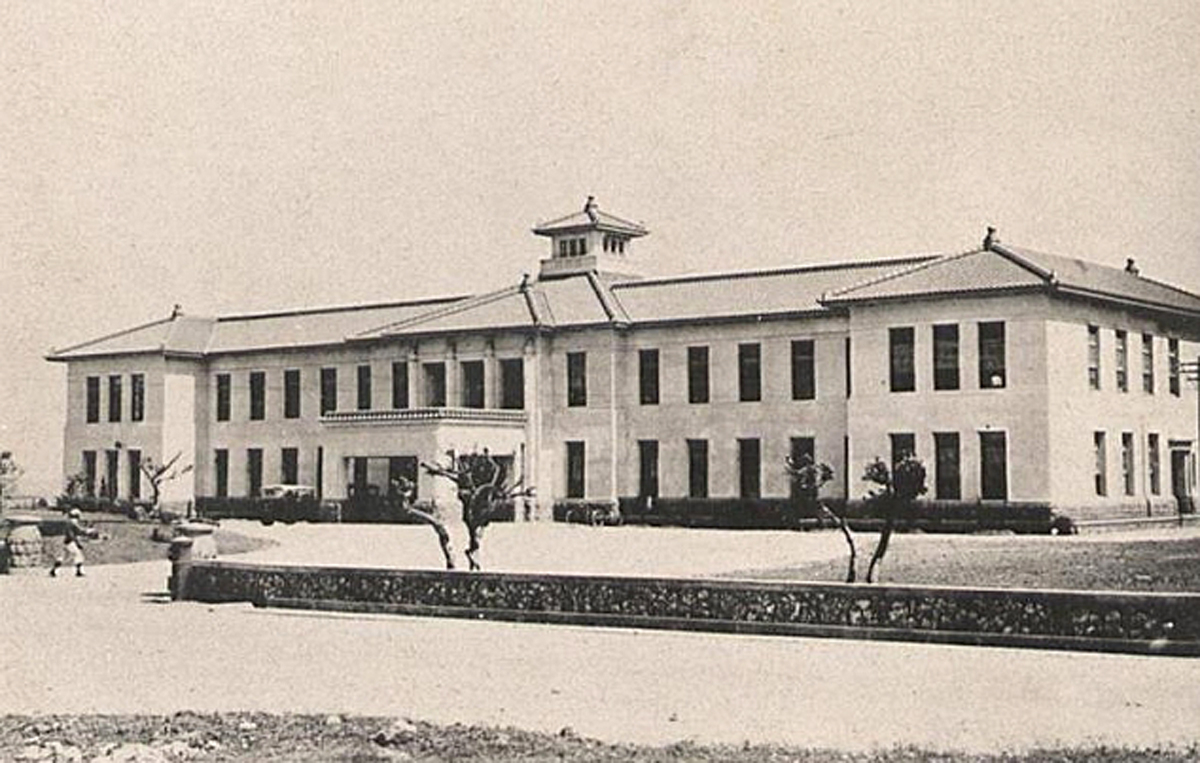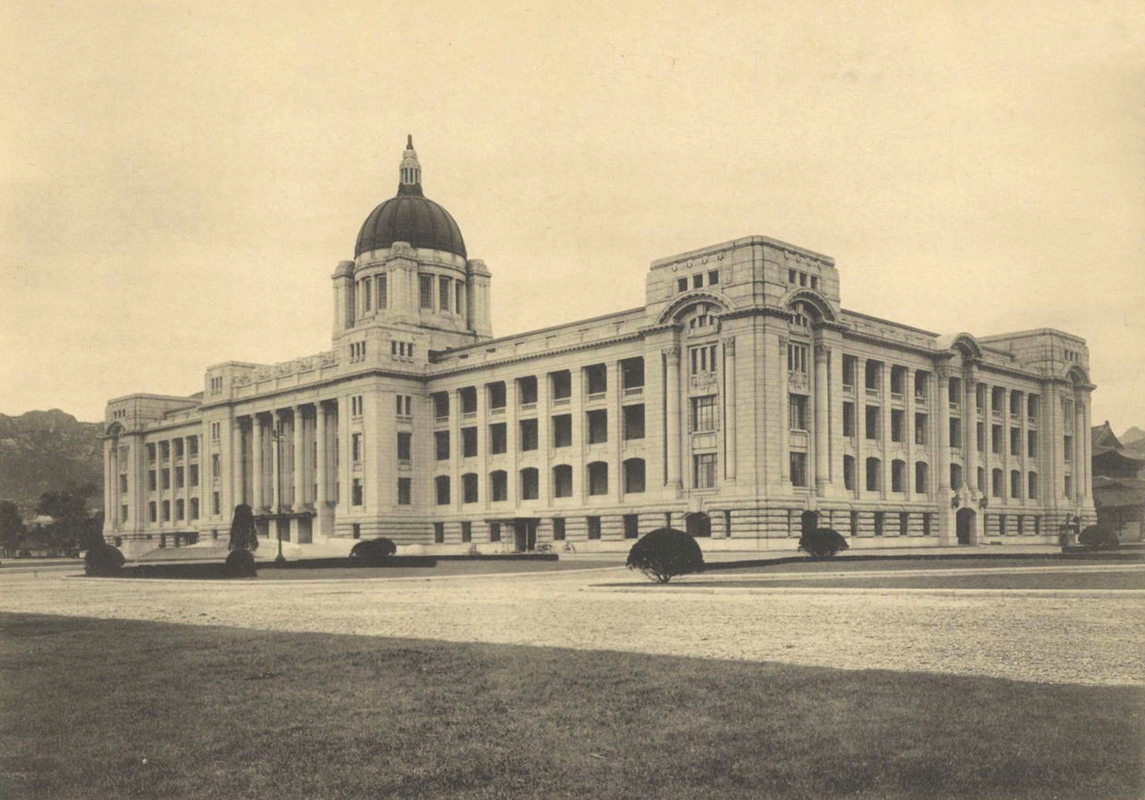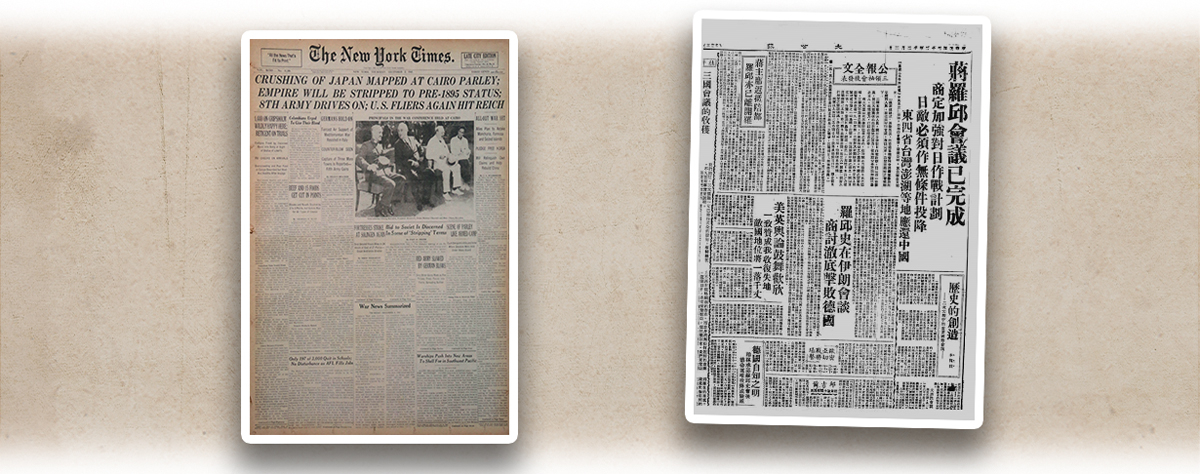As a key member of the Allied powers, China actively engaged in the fight against Japan as well as the war-time diplomacy. In November 1943, Chiang Kai-shek (蔣介石) was invited to Cairo, the capital of Egypt, to attend a summit with American and British leaders. The three heads of state, Chiang (Soong Mei-ling﹝宋美齡﹞, Chiang’s wife, as his interpreter), Franklin D. Roosevelt, and Winston L. S. Churchill met at the conference held from 22 to 26 November 1943. The three leaders discussed the counterattack deployment on Japan, post-war settlements, and the Allies’ military tactics in Myanmar.
The outcome of the conference was the Cairo Declaration, where the three Allied powers announced their commitment to continue fighting until Japan’s unconditional surrender. The declaration also stated, “It is their purpose that Japan, shall be stripped of all the islands in the Pacific which she has seized or occupied since the beginning of the first World War in 1914, and that all the territories Japan has stolen from the Chinese, such as Manchuria, Formosa, and the Pescadores, shall be restored to the Republic of China.” The three powers also agreed that “in due course, Korea shall become free and independent”. In the Potsdam Declaration issued by China, Britain, and the United States in July 1945, the Cairo Declaration was included as the prerequisite for Japan’s surrender.
|
|
Besides the Cairo Conference, how did China conduct diplomacy with the Allied powers during the war? |
|
|
See answer below. |
In October 1943, China, the United States, Britain, and the Soviet Union signed the Moscow Declaration, an agreement on the establishment of an international peace organisation after the war.
From 22 to 26 November 1943, leaders of China, the United States, and Britain met in Cairo to discuss tactics for combating Japan and the post-war order in East Asia. The photo shows the venue of the Cairo Conference today.
A group photo from the Cairo Conference, from left to right: Generalissimo Chiang Kai-shek of China, President Roosevelt of the United States, Prime Minister Churchill of Britain, and Soong Mei-ling, Madame Chiang.
China, the United States, and Britain issued the Cairo Declaration on 1 December 1943 after the Cairo Conference. The photos are the texts of the Cairo Declaration in Chinese and English.
Full version of the Cairo Declaration:
President Roosevelt, Generalissimo Chiang Kai-Shek, and Prime Minister Churchill, together with their respective military and diplomatic advisers, have completed a conference in North Africa. The following general statement was issued:
The several military missions have agreed upon future military operations against Japan. The three great Allies expressed their resolve to bring unrelenting pressure against their brutal enemies by sea, land and air. This pressure is already rising.
The three great Allies are fighting this war to restrain and punish the aggression of Japan. They covet no gain for themselves and have no thought of territorial expansion. It is their purpose that Japan, shall be stripped of all the islands in the Pacific which she has seized or occupied since the beginning of the first World War in 1914, and that all the territories Japan has stolen from the Chinese, such as Manchuria, Formosa, and the Pescadores, shall be restored to the Republic of China. Japan will also be expelled from all other territories which she has taken by violence and greed. The aforesaid three great powers, mindful of the enslavement of the people of Korea, are determined that in due course Korea shall become free and independent.
With these objects in view the three Allies, in harmony with those of the United Nations at war with Japan, will continue to persevere in the serious and prolonged operations necessary to procure the unconditional surrender of Japan.
The Japanese Kwantung Army occupying Northeast China. The Cairo Declaration declared that the four provinces in the northeast “shall be restored to the Republic of China”.
The Government-General of Taiwan (Formosa) established under Japanese rule. The Cairo Declaration declared that Formosa “shall be restored to the Republic of China”.
The Penghu (the Pescadores) County Government established under Japanese rule. The Cairo Declaration declared that the Pescadores “shall be restored to the Republic of China”.
The Korean government established under Japanese rule. The Cairo Declaration declared that Korea “shall become free and independent”.
The coverage of the Cairo Conference and the Cairo Declaration in New York Times on 2 December 1943 and Ta Kung Pao on 3 December 1943.
Left: between 17 July 1945 and 2 August 1945, the Allied powers convening in Potsdam, Germany. Right: on 26 July, the United States, Britain, and China signed the Potsdam Declaration, reiterating the terms in the Cairo Declaration and calling for Japan’s unconditional surrender. Participation in wartime international conferences greatly boosted China’s global influence.
|
|
Besides the Cairo Conference, how did China conduct diplomacy with the Allied powers during the war? |
|
|
China actively engaged in wartime diplomacy since it joined the Allied powers. In October 1943, China signed the Moscow Declaration alongside the United States, Britain, and the Soviet Union, agreeing on the establishment of a post-war international peace organisation (i.e. the United Nations). Leaders of China, the United States, and Britain signed the Potsdam Declaration on 26 July 1945 (also known as Proclamation Defining Terms for Japanese Surrender, which the Soviet Union signed later). The Potsdam Declaration reiterated that the terms in the Cairo Declaration should be carried out. Japanese Emperor Hirohito accepted the Potsdam Declaration in his broadcast of surrender. |
Source of most photos used in this feature piece: Fotoe and misc. photo sources.






